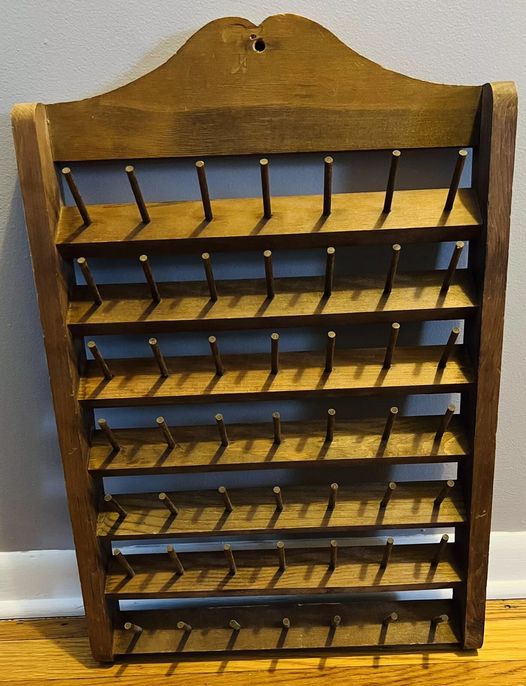The vintage thread spool holder is a beloved artifact in the world of sewing. This essential tool has a rich history, a specific role in sewing practices, and a lasting legacy that continues to captivate sewing enthusiasts and collectors.
History of the Thread Spool Holder
The thread spool holder’s origins can be traced back to the late 19th and early 20th centuries. As sewing machines became more popular, the need for organized and efficient thread storage grew. The thread spool holder emerged as a practical solution, designed to keep spools of thread neatly in place and accessible during sewing.
Early thread spool holders were often handcrafted, featuring designs made from wood, metal, or ceramic. These vintage holders varied in style, ranging from simple, functional designs to ornate, decorative pieces. The craftsmanship and materials used in these early holders reflect the era’s attention to detail and the importance of sewing in daily life.

Usage of the Thread Spool Holder
The primary function of the thread spool holder is to keep spools of thread organized and within easy reach. Here’s how it is used:
The vintage thread spool holder carries a rich legacy, symbolizing the evolution of sewing tools and the craftsmanship of earlier times.
Craftsmanship and Design
Many vintage thread spool holders are admired for their craftsmanship and design. Wooden holders might feature intricate carvings or inlays, while metal ones could display elegant scrollwork or decorative finishes. These holders are not only practical but also reflect the artistic sensibilities of their time.
Collectibility and Preservation
Today, vintage thread spool holders are highly sought after by collectors and sewing enthusiasts. Their historical significance and unique designs make them prized additions to antique collections. Restoring and preserving these holders allows enthusiasts to maintain a connection to the past and appreciate the artistry involved in their creation.
Educational Value
Vintage thread spool holders also serve an educational purpose. They offer insights into the evolution of sewing practices and tools. By examining these holders, one can learn about the technological advancements and design trends in sewing equipment over the years.
Conclusion
The vintage thread spool holder is more than just a sewing accessory; it is a testament to the ingenuity and craftsmanship of earlier generations. Its history, practical use, and enduring legacy highlight the importance of organization and design in sewing. While modern tools have evolved, the charm and functionality of vintage thread spool holders continue to inspire and connect sewing enthusiasts to the rich traditions of the past.